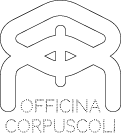Self-Initiated 2010
![]()
Infusing life in dead, toxic, eternal matters, enabling processes of cyclical dissolution
CONCEPT/CONTENT
Continuous Bodies – The Ephemeral Icon (2010) is a project drawing on the studio’s investigations about decomposition and regenerative transformations of organic compounds (i.e., Continuous Bodies – Bodies of Change) shifting the focus towards the employment of selected fungal agents (i.e., mycelium) for supporting humans in remediating the dreadful consequences originated by man-made materials that derive from extractive, finite resources.
Specifically, the project tackles the severe impact created by the prolonged and irresponsible use of toxic materials (i.e., synthetic plastics) that do not naturally decompose and that nevertheless have been for long embedded into short-life products/applications, hence dramatically threatening the functioning of the entire ecosystem, as supported by a “socio-cultural” approach rooted in fast-paced disposability.
By actively conducting hands-on research in the lab, and by validating the capacity of the selected fungal species/strain (i.e., Phanerochaete chrysosporium) in effectively decomposing phenolic compound and man-made plastics, the project extends such key findings through a vision and an urgent social narrative, helping us questioning our contemporary “throw away” culture, while critically addressing the role and responsibility of the entire design field, with a focus on individual designers, to beloved at as radical change-makers.
THE INSTALLATION
The Mycelium Bio Cover
“…why shouldn’t a plastic chair dress up for death?”
The project narrative relies on a globally well-known, pragmatic object – the Monobloc plastic chair – as clear symbol of the limited life-expectancy characterising most consumer products, in direct opposition to the “immortal” qualities of the materials that the majority of consumer products are in fact made of.
Posing a strong emphasis on the importance of thoroughly understanding the essential complementarity between the notions of life and death as a whole, the Mycelium Bio Cover is conceived as a tool/product enabling to turn inanimate, synthetic objects into living entities. Hence, by making a disposable plastic chair biologically active and alive, it becomes possible to trigger a process allowing for its degradation and consequent death.
In fact, the mycelium-infused wool cover is designed for supporting the life and growth of the related fungus, providing nutrient grounds and conditions favouring the mycelium steady expansion and the related transfer on the plastic material, for its overall colonisation, transformation and final dissolution.
Once the plastic chair is fully colonised, users can safely dispose of it by placing it in the garden or literally burying it in the ground, hence rendering it as natural soil fertiliser and safe nutrient, favouring the growth of new life.
By merging scientifically-based facts with a visionary approach, and rooted in transformative biological processes, The Ephemeral Icon project delivers a strong critical statement, encouraging a concrete shift in relation to the pivotal role of designers in facing and contributing to tackle some of the most severe and urgent issues characterising contemporary society, striving for remediating the harmed relationship between human Culture and Nature, as mutually inclusive and inextricably connected domains.
![]()
